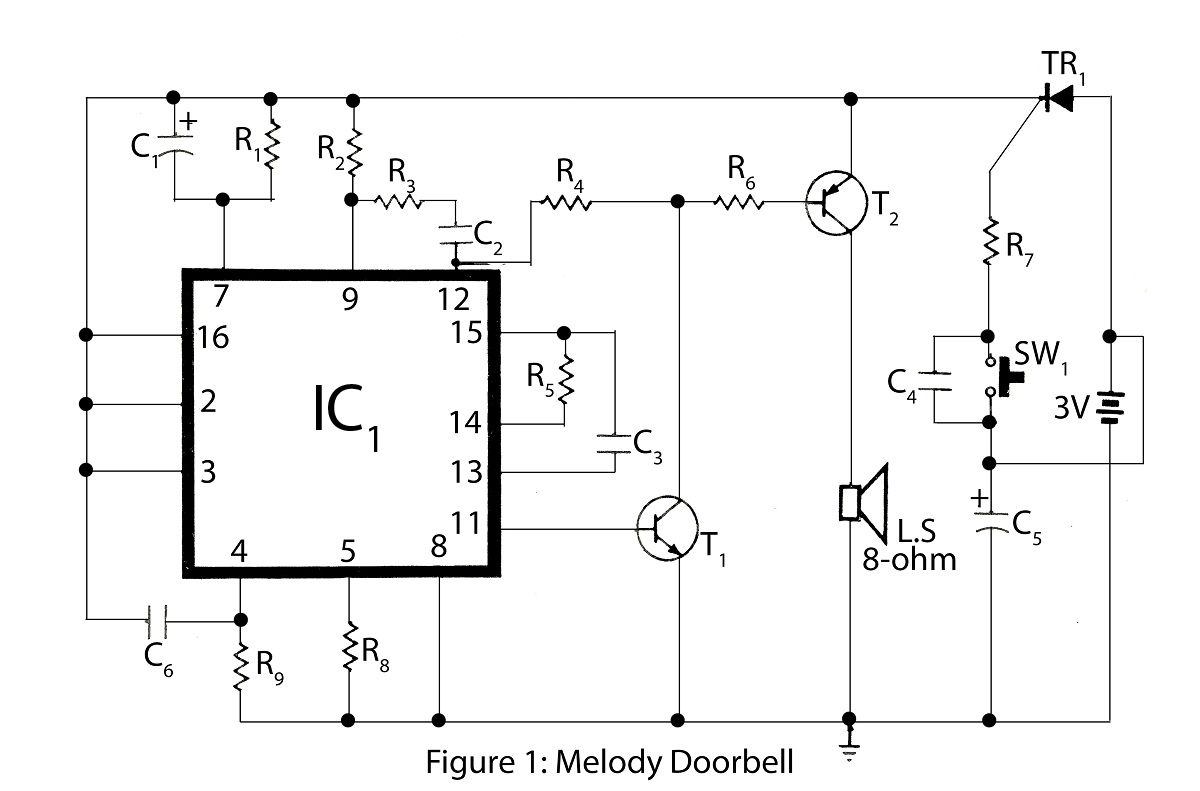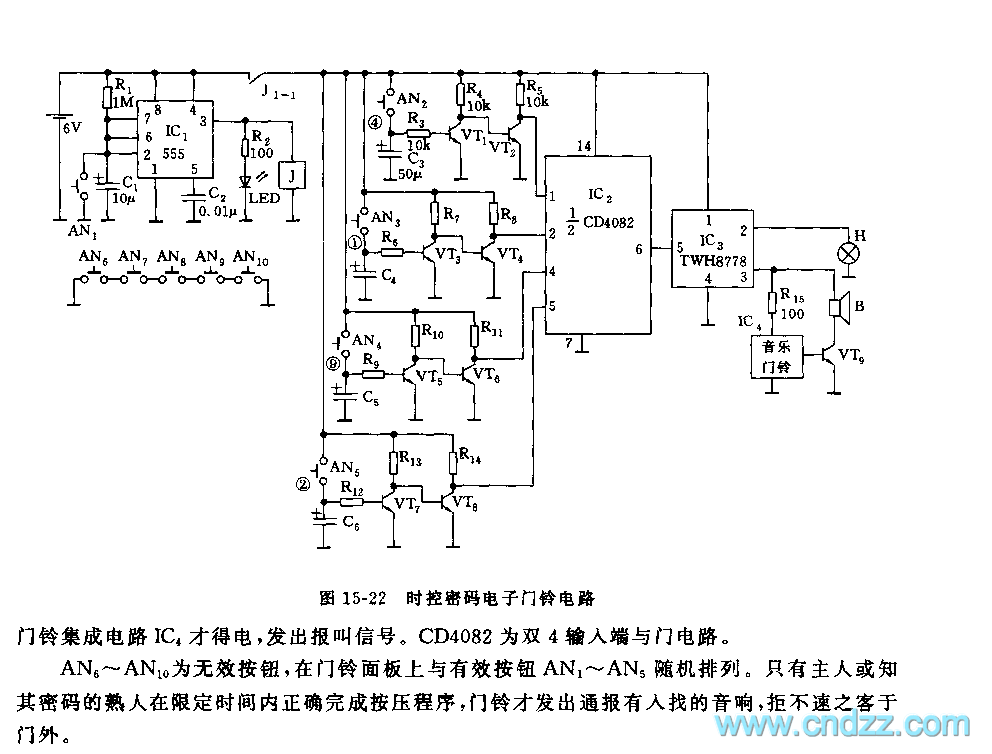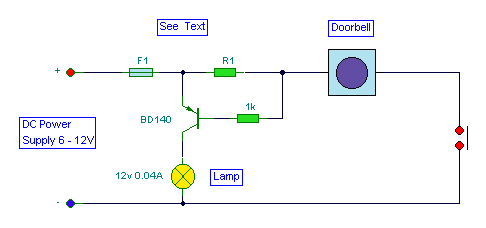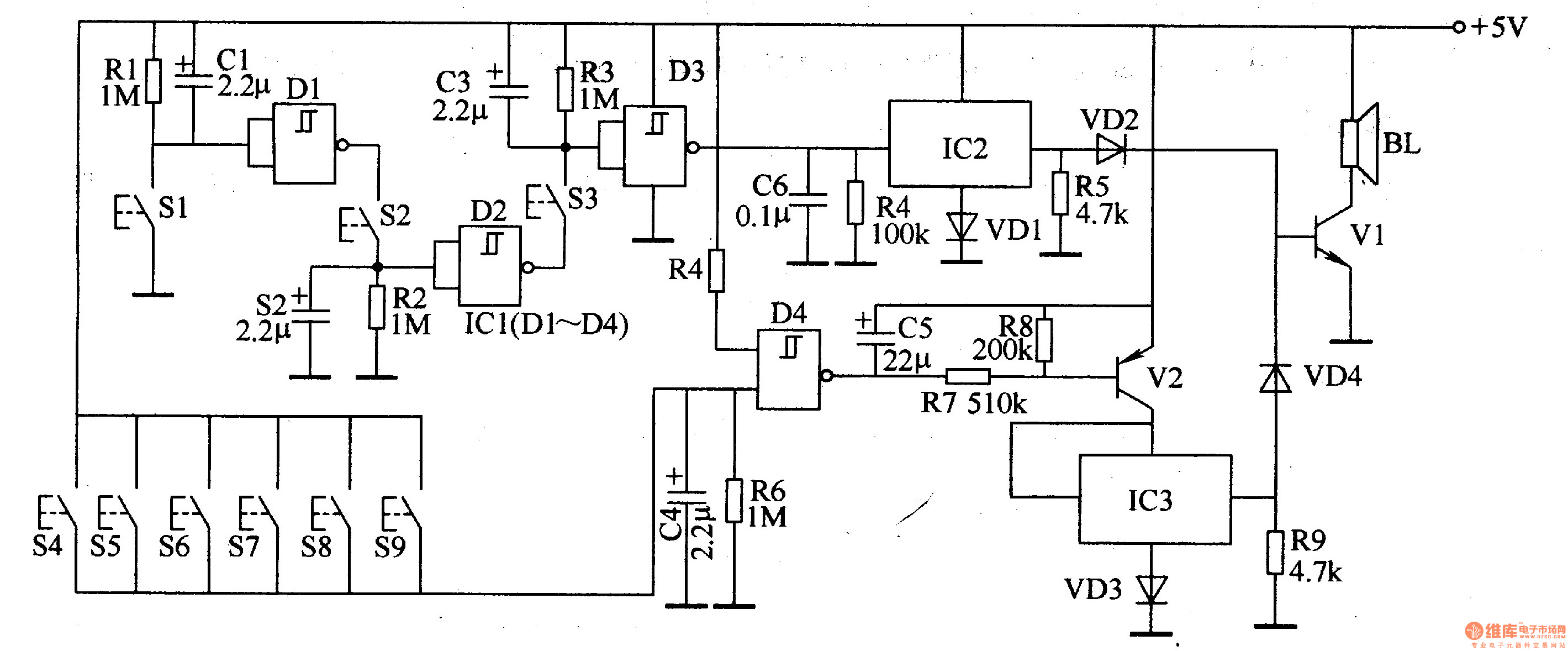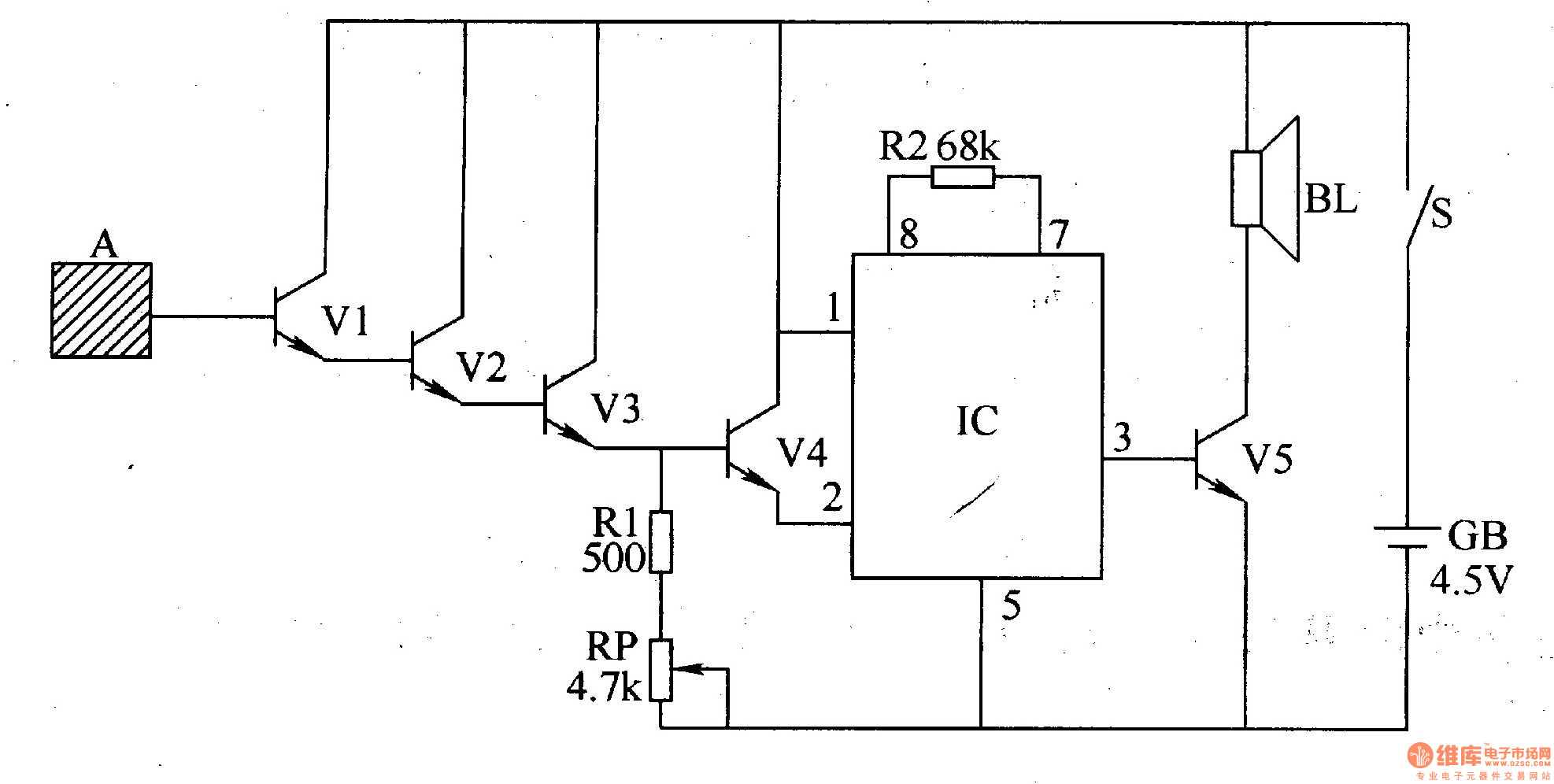
Doorbell Cascade
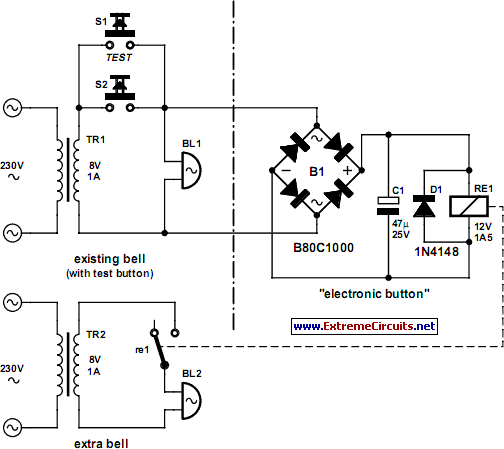
In some situations, a more complex approach is necessary, even when a simpler method is available. This scenario involves adding a second doorbell in parallel with an existing one. While this typically does not require additional electronic components, connecting the second bell directly to the first may not be advisable if the current transformer is not rated to handle the extra load. One alternative is to purchase a larger transformer; however, this option can be costly and may pose installation challenges, particularly if the transformer is integrated into a meter box. Therefore, a different method is employed. The proposed circuit operates in parallel with the existing doorbell. This is feasible due to the minimal current consumption of the second bell compared to the primary bell's load. A bridge rectifier is used to convert the bell voltage when the push-button is activated, which subsequently closes the relay contacts. These contacts serve as an electronic switch for the second bell, which is powered by its own inexpensive transformer.
The circuit design for adding a second doorbell in parallel involves several key components to ensure reliable operation while minimizing the load on the existing transformer. The primary components include a push-button switch, a bridge rectifier, a relay, and a secondary bell with its dedicated transformer.
1. **Push-Button Switch**: This component is the user interface for activating the second doorbell. When pressed, it sends a signal to the bridge rectifier.
2. **Bridge Rectifier**: The bridge rectifier consists of four diodes arranged in a configuration that allows it to convert the alternating current (AC) from the existing doorbell system into direct current (DC). This conversion is necessary for the relay to operate effectively.
3. **Relay**: The relay acts as an electronic switch that closes the circuit for the second bell when the push-button is pressed. It is rated to handle the power requirements of the second doorbell, ensuring that it can operate independently of the first bell's transformer.
4. **Secondary Bell and Transformer**: The second doorbell is connected to its own transformer, which is appropriately rated for its power needs. This setup prevents any overloading of the existing transformer and allows for the independent operation of both bells.
The overall circuit configuration ensures that the second doorbell can be activated without compromising the performance of the existing doorbell system. By using a bridge rectifier and relay, the circuit efficiently manages the power distribution, allowing for the addition of a second doorbell without the need for extensive modifications to the existing electrical setup. This approach not only simplifies installation but also provides a cost-effective solution for expanding doorbell functionality.Sometimes you have to do it the hard way, even if doing it the easy way is an option. That is the case here. The intention is to add a second doorbell in parallel with the existing bell. This does not, in principle, require any electronic components. You would simply connect the second bell to the first one. But if the existing bell transformer is not rated for the additional load then this is not a good idea! An option is to buy a new and larger transformer. But bigger also means more expensive! Moreover, replacing the existing transformer can be an awkward job, for example when it is built into the meter box. So we follow different approach. This circuit is connected in parallel with the existing bell. This is possible because the current consumption is very small compared to the load of the bell. The bridge rectifier rectifies the bell voltage when the push-button is pressed. This will then close therelay contacts. These contacts are the electronic` button for the second bell, which is powered from its own cheap bell transformer.
🔗 External reference
The circuit design for adding a second doorbell in parallel involves several key components to ensure reliable operation while minimizing the load on the existing transformer. The primary components include a push-button switch, a bridge rectifier, a relay, and a secondary bell with its dedicated transformer.
1. **Push-Button Switch**: This component is the user interface for activating the second doorbell. When pressed, it sends a signal to the bridge rectifier.
2. **Bridge Rectifier**: The bridge rectifier consists of four diodes arranged in a configuration that allows it to convert the alternating current (AC) from the existing doorbell system into direct current (DC). This conversion is necessary for the relay to operate effectively.
3. **Relay**: The relay acts as an electronic switch that closes the circuit for the second bell when the push-button is pressed. It is rated to handle the power requirements of the second doorbell, ensuring that it can operate independently of the first bell's transformer.
4. **Secondary Bell and Transformer**: The second doorbell is connected to its own transformer, which is appropriately rated for its power needs. This setup prevents any overloading of the existing transformer and allows for the independent operation of both bells.
The overall circuit configuration ensures that the second doorbell can be activated without compromising the performance of the existing doorbell system. By using a bridge rectifier and relay, the circuit efficiently manages the power distribution, allowing for the addition of a second doorbell without the need for extensive modifications to the existing electrical setup. This approach not only simplifies installation but also provides a cost-effective solution for expanding doorbell functionality.Sometimes you have to do it the hard way, even if doing it the easy way is an option. That is the case here. The intention is to add a second doorbell in parallel with the existing bell. This does not, in principle, require any electronic components. You would simply connect the second bell to the first one. But if the existing bell transformer is not rated for the additional load then this is not a good idea! An option is to buy a new and larger transformer. But bigger also means more expensive! Moreover, replacing the existing transformer can be an awkward job, for example when it is built into the meter box. So we follow different approach. This circuit is connected in parallel with the existing bell. This is possible because the current consumption is very small compared to the load of the bell. The bridge rectifier rectifies the bell voltage when the push-button is pressed. This will then close therelay contacts. These contacts are the electronic` button for the second bell, which is powered from its own cheap bell transformer.
🔗 External reference
